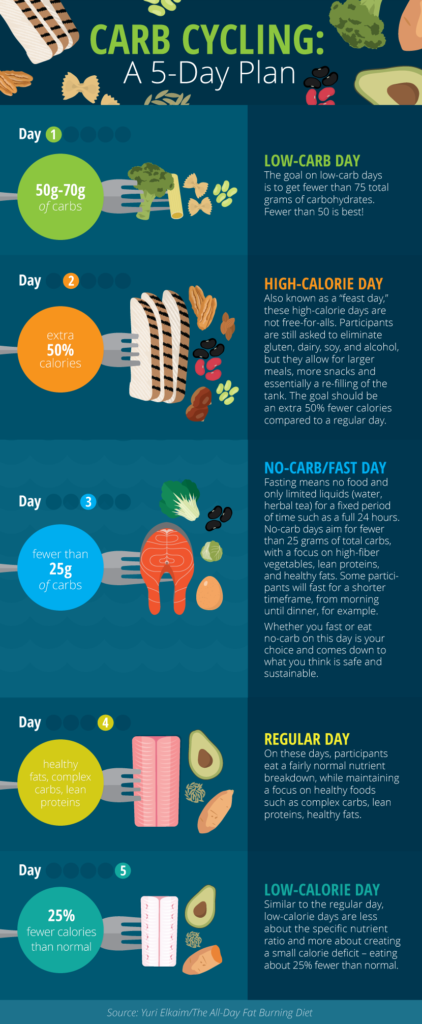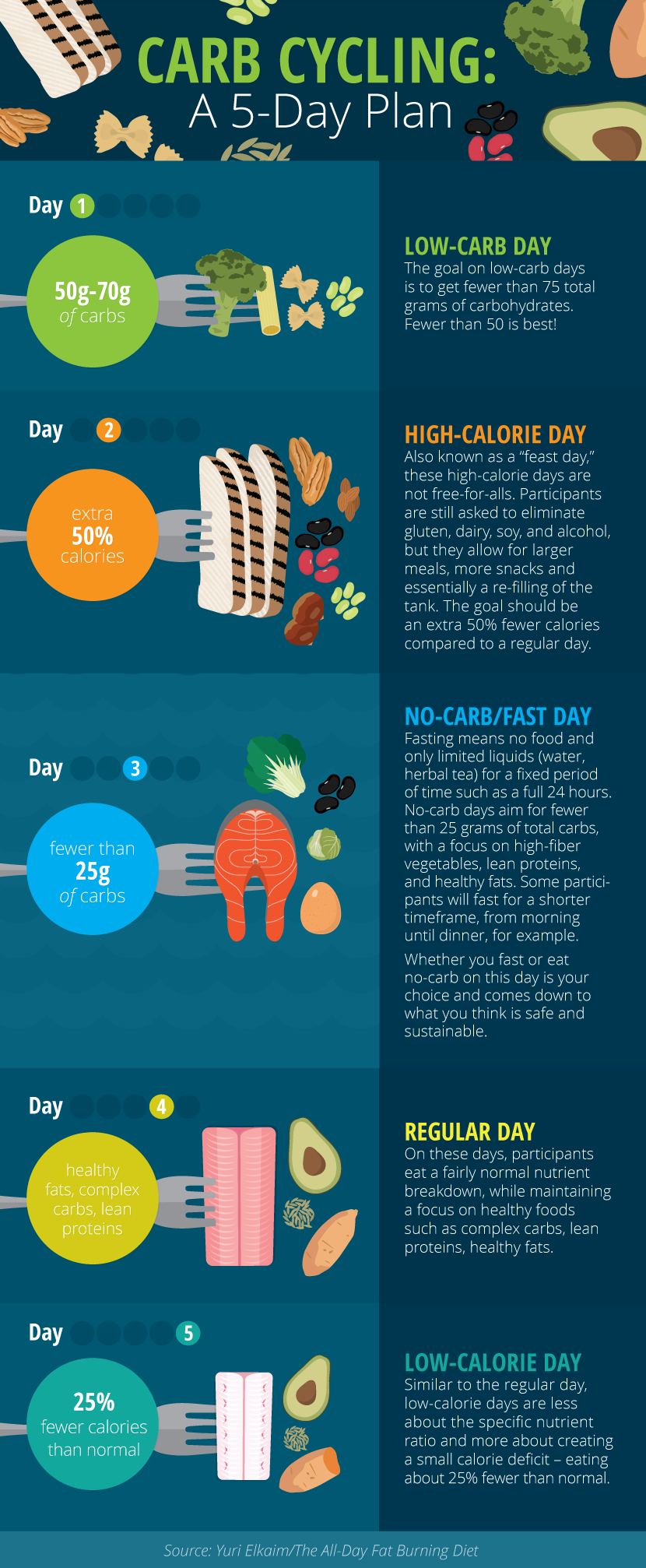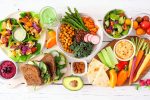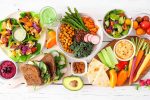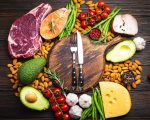What is Carb Cycling?
Carb cycling is a diet during which you eat varying amounts of carbohydrates in any given day, based on a strict schedule.
What does the diet look like? The more popular any diet gets, the more variations of it there are, so rather than presenting one true carb cycling diet, it’s more helpful to look at the basic foundation that most participants build on, which is a five-day cycle.
Participants can pick and choose which foods they eat, as long as they fall within those basic nutrient breakdowns and ratios in the illustration above.
Some participants will cut out all gluten, dairy, soy, and alcohol, while others will merely try to limit those foods. Some will strictly track their food intake in order to perfectly meet the macros, or nutrient ratios, while others prefer using a simpler system (for example, Yuri Elkaim, author of the best-selling book The All-Day Fat Burning Diet, who recommends using portion sizes to come close to the ratios without actually measuring and tracking).
Unlike a fully low-carb diet, which can result in negative side effects (less energy, more cravings, a drop in exercise performance), cycling can, in theory, give the body regular metabolism boosts while still helping lower body fat and increase performance.
First made popular in the bodybuilding and figure competition circles among people keenly interested in dropping body fat and seeing quick physical changes, carb cycling has become more mainstream, and even some registered dietitians and nutrition experts are using a version of it with their clients.
However, Katie Heddleston, MS, RD, warns that the term carb cycling may be used differently by different people, and always, it’s important to work with an expert who can tailor the plan to your specific needs and goals.
What the mainstream media and fitness industry refer to as “carb cycling” is technically “food cycling,” Heddleston tells me. “This type of diet takes focus and diligence, as there is a lot to keep track of during each day of the five-day food cycle.” She goes on to say, “For what I teach and do as a dietitian, this type of food cycling isn’t one I do with my clients. However, I do appreciate a cyclic diet. Our bodies are not static, so our diets shouldn’t be static. In the version of carb cycling I do with my clients, we focus in on cycling the carb amounts for each day, pairing them appropriately with a workout that requires that particular amount. For instance, a long run day or a heavy leg lift day, would utilize a higher amount of carbs. My method removes a bit of guesswork and avoids extremes, such as a 24-hour fast.”
It’s important to note: carbs themselves are not bad. In fact, they’re an important part of a balanced, healthy diet! Carbs help us have the energy we need to work and play and they can also help with recovery after workouts. Without them, we can experience mood swings (as anyone who has ever cut carbs for even a single day can attest). Plus, carbs are in some of the most delicious foods and snacks, and cutting out the things that bring us joy can make for an unsustainable diet plan.
But as with any nutrient or food source, there are choices that are better than others, at least in terms of meeting the goal of a healthier, more fit life. For carbs, it comes down to simple vs. complex as well as foods that naturally have higher or lower carbs.

